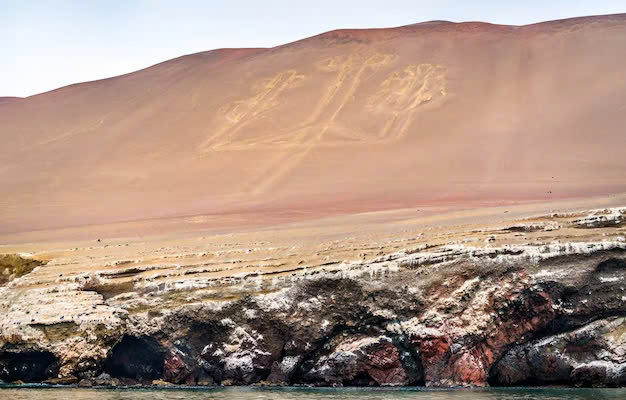Unveiling a Colossal Coastal Geoglyph

Perched dramatically on the northern face of Peru’s Paracas Peninsula, the Paracas Candelabra stands as a monumental testament to ancient ingenuity. Stretching an impressive 180 meters high, this massive geoglyph captures the imagination, visible from the vast Pacific Ocean and challenging modern observers to unravel its profound mysteries.
Origins: A Puzzle of Ancient Cultures
The Historical Context
Traditionally associated with the Paracas culture (800 BC – 100 BC), the Candelabra’s true origins remain shrouded in uncertainty. Scholars debate whether it was created by the Paracas people or potentially predates them, with some suggesting connections to other ancient Andean civilizations like the Nazca.
Theories of Creation

Despite extensive research, no definitive records or inscriptions reveal the exact circumstances of its creation. This absence of concrete evidence only deepens the geoglyph’s enigmatic nature, inviting continued speculation and exploration.
Potential Purposes: More Than Just a Landscape Feature
A Nautical Navigation Aid
One compelling theory suggests the Candelabra served as a critical navigational marker for seafarers. Its prominent location and remarkable visibility from the ocean could have guided ancient maritime travelers along the treacherous Peruvian coastline.
Spiritual and Ceremonial Significance
Alternative interpretations propose the geoglyph held profound spiritual meaning. Some researchers believe it might have:
- Marked astronomical events
- Aligned with solstices
- Played a role in fertility rituals
- Served as a symbolic communication of religious practices
Territorial and Cultural Marker

The Candelabra’s immense scale might also have functioned as a powerful territorial symbol. By visibly demarcating boundaries and communicating cultural dominance, it could have played a crucial role in inter-community relationships.
An Enduring Symbol of Andean Complexity
The Paracas Candelabra transcends its physical existence. It represents more than a mere geological formation—it is a window into the sophisticated spiritual and cultural world of ancient Andean civilizations.

Whether viewed as a navigational tool, a religious icon, or a territorial marker, the geoglyph continues to inspire wonder. Its persistent presence on the Peruvian landscape serves as a powerful reminder of human creativity, spiritual depth, and the enduring mysteries of our ancestral cultures.
The Candelabra stands not just as an archaeological artifact, but as a timeless symbol of human ingenuity—inviting us to contemplate the rich, complex narratives etched into the very landscape of our planet.

